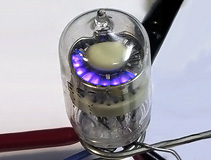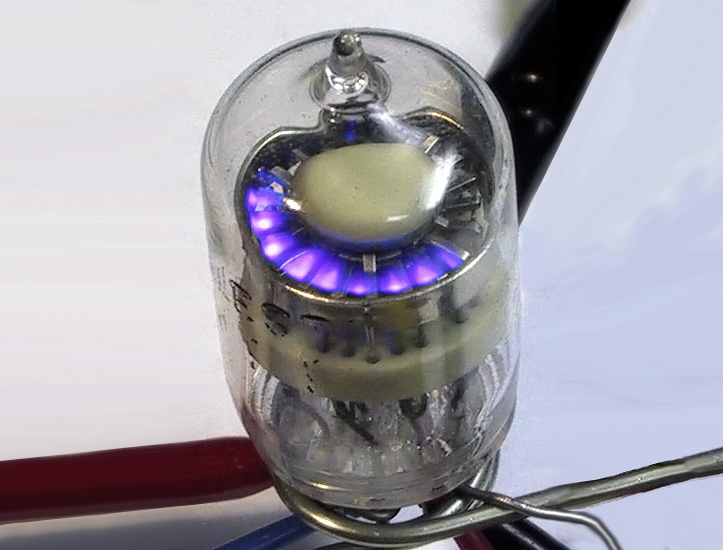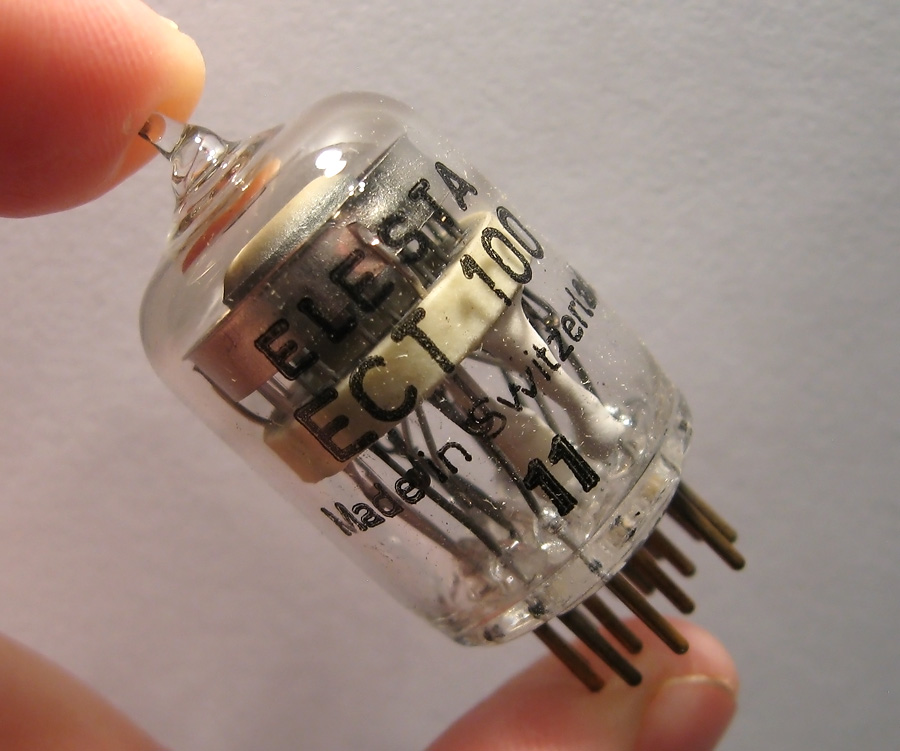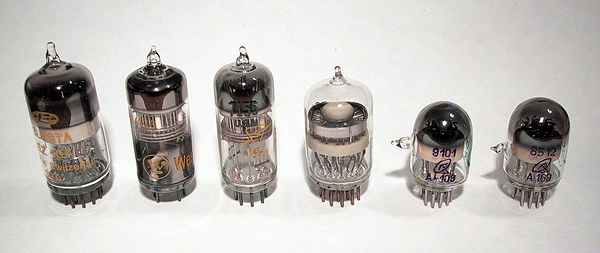| Elesta ECT100 Dekatron Tube | |
| Written by AnubisTTP on 2007-12-04 |
|
  |
The EZ10 may be strange, but the ECT100 is truly bizarre. The ECT100 is a 1 MHz bidirectional hydrogen-filled selector with only 20 cathode positions. This seemingly impossible feat is accomplished by a highly innovative internal design in which both guides and cathodes are driven with pulse waveforms. The tube has four distinct cathode structures, each of which is arranged as a ring of five spade-shaped posts connected to a central disk. Two of the cathode structures are designated as output cathodes, and the other two are designated as guide cathodes. In operation, the two output cathodes are driven with alternating waveforms and the two guide cathodes are driven with slightly delayed signals from the output cathodes. By reversing the connections between the output cathodes and the guide cathodes, the rotation direction can be reversed, allowing for a complete bidirectional base-ten count operation to be carried out in a tube that has only 20 cathode positions.
With all of the ECT100's cathodes tied up as waveform inputs, a rather interesting method must be used to read the tube's state. Below each of the tube's output cathode spades is a forked sense anode, which projects upward around either side of the spade. When a given spade is ionized, the glow will exit from slits on either side of the spade, enveloping the sense anode. This causes a probe current to flow back through the anode, which is sensed on one of the tube's ten supplemental anode pins.
The ECT100's combination of speed, function, and size make it likely the most advanced dekatron ever made. Despite this, it was birthed into obsolescence, its release coinciding with the introduction of small-scale integrated circuits. As a result, the ECT100 was narrowly implemented in its time, and is virtually nonexistent today.

ECT100, normal operation.

The Elesta ECT100 is believed to be one of the most advanced dekatron tubes ever made.

The EZ-10 is one of the smallest dekatrons ever made, but the ECT100 is even smaller. Unlike the EZ-10, the ECT100 is capable of bidirectional counting. Note that the ECT100 is also the only dekatron known to have gold pins.

The ECT100 has four guide electrodes and a complicated drive signal.

Like the EZ10A and EZ10B, ECT100's were commonly sold in 'bulk packs', which packed five tubes into a single hinged carton.

Miniature dekatron size comparision. Part numbers from left to right:Elesta EZ10A, Westinghouse 6879, Sylvania 7155, Elesta ECT100, Soviet A108, Soviet A109.
 Return to Dekatron Glow Transfer Counting Tubes
Return to Dekatron Glow Transfer Counting Tubes










 Return to Dekatron Glow Transfer Counting Tubes
Return to Dekatron Glow Transfer Counting Tubes